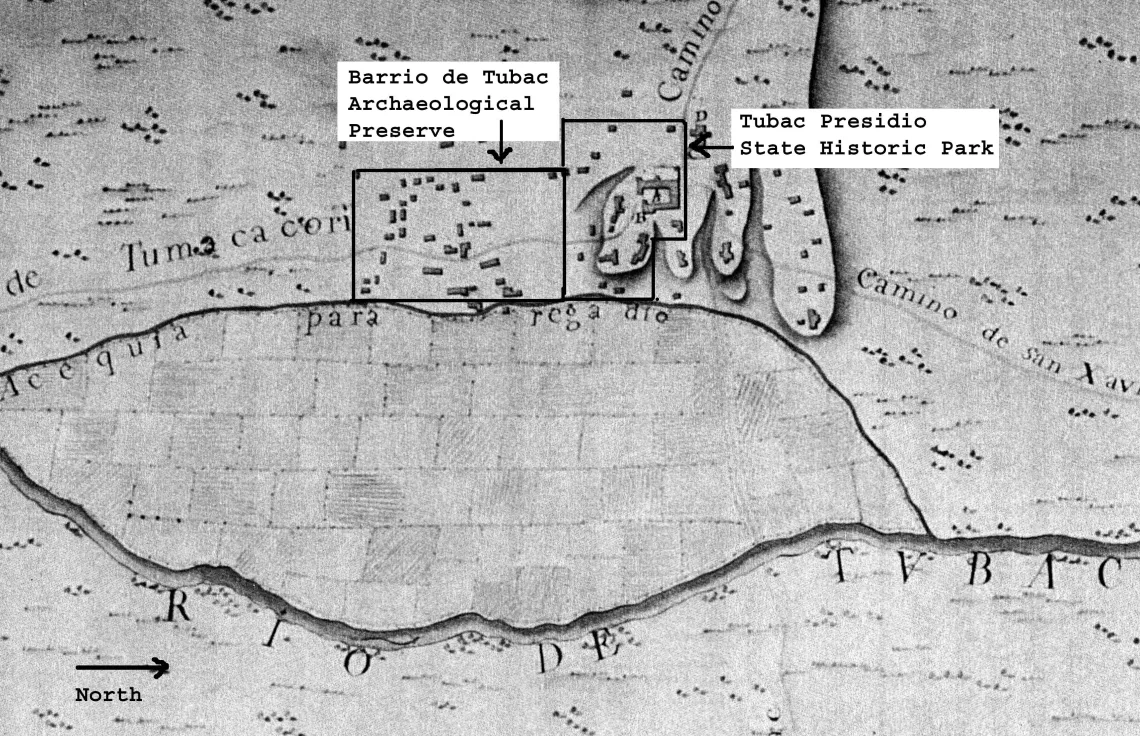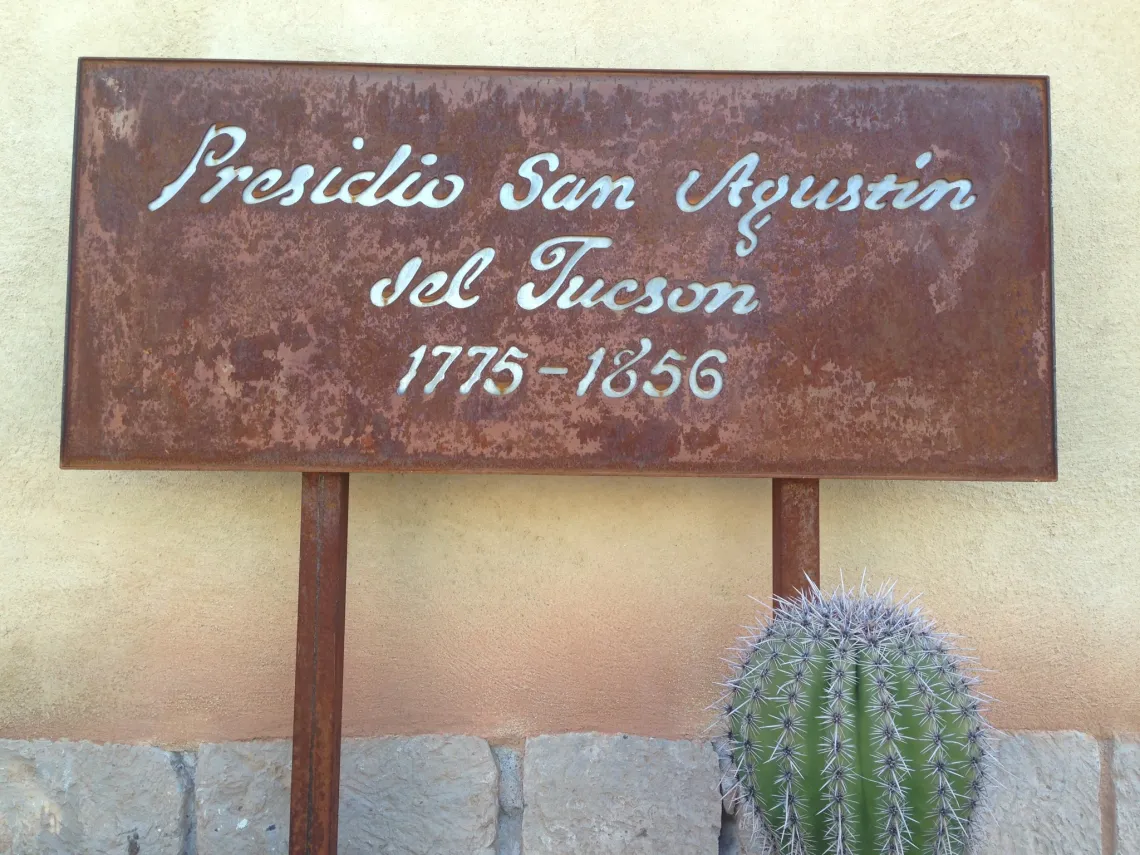
The earliest documented Spanish activity in southern Arizona is the 1539 expedition headed by Fray Marcos de Niza, in search of the fabled Seven Cities of Cibola. Their stay in Arizona was brief and transitory, as they quickly passed into New Mexico and into the history of that region. Coronado’s expedition, in 1540, also likely passed through the southeastern portion of Arizona, although the exact route is still a matter of considerable controversy. Although the Spanish interacted with Puebloan populations in northern Arizona during the latter half of the 16th century, it was not until the 1690s that the Spanish began to explore the southern deserts systematically.
When the Spanish entered southern Arizona, they encountered populations living in numerous villages along the San Pedro and Santa Cruz rivers.
The Sobaipuri arrive in southern Arizona, from Mexico, maybe as early as the 15th century.
The Sobaipuri were living along the San Pedro River and the inhabitants of the Santa Cruz and Gila river valleys were called Pimas. All spoke dialects of the Piman/O’odham language and their territory came to be known as the Pimería Alta in Spanish chronicles. Once contacts were made, the Spanish military and clergy soon established outposts to enforce their claim on the region. The most famous clergyman, Father Kino, established a series of missions in northern Sonora and southern Arizona beginning in 1687.The presence of the Europeans and the introduction of Christianity dramatically changed indigenous life ways. Spaniards introduced livestock and new crops such as wheat, and inadvertently new diseases that decimated many native communities. Many of the settlements were re-organized around presidios (fortified encampments/towns) and missions to further consolidate Spanish administrative control. At the same time the natives sought to develop alliances with these newcomers because they were increasingly threatened by raiding Apaches, who had begun to push against the eastern boundary of the Pimeria Alta shortly before the arrival of the Europeans. Thus both the Pimans and the Spaniards saw advantages in forming alliances, although these arrangements often led to tensions between them and periods of unrest and revolt. Tensions also developed between the Spanish civil authorities and missionaries over control of the native populations. Many of the secular interests saw the indigenous people as a labor source for the presidios, mines and ranches that were being developed in the region. Growing discontent among the Piman-speaking populations culminated in the Pima Revolt of 1751, when several missions in the region were attacked and burned. Although the revolt was eventually suppressed, it led to the establishment of the Presidio San Ignacio de Tubac (Tubac, Arizona) in 1753.

Mission San Xavier del Bac, about 10 miles south of Tucson in the San Xavier District of the Tohono O'odham Nation, founded 1692 by the Italian Jesuit Eusebio Francisco Kino.
In the 1770s, the intensity of Apache raiding increased. This led to the founding of the Presidio Santa Cruz de Terrenate on the San Pedro River in 1775, and to the abandonment of most of the Sobaipuri communities in the San Pedro River Valley. For the most part, these groups resettled along the Santa Cruz River, particularly in the Tucson Basin. As part of the realignment of the region at this time, the Tubac presidio moved north, to become the Presidio San Agustin de Tucson, which was established in 1776. Eventually, the Tubac presidio was re-established in 1787, and the region enjoyed a period of relative calm that lasted until the era of the Mexican Republic.






